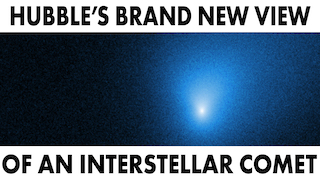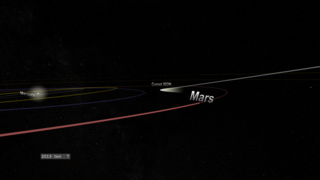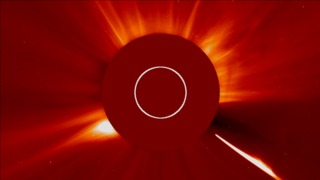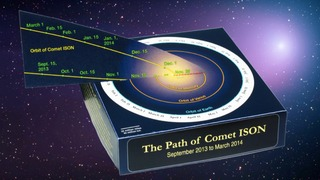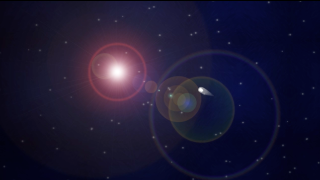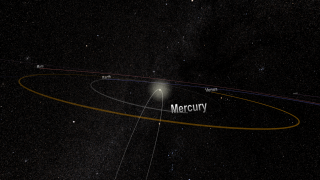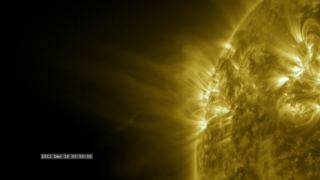How to Cook a Comet
Animators at NASA's Goddard Space Flight Center in Greenbelt, Md. created this short movie showing how the sun can cook a comet.
Such a journey is currently being made by Comet ISON. It began its trip from the Oort cloud region of our solar system and is now traveling toward the sun. The comet will reach its closest approach to the sun on Thanksgiving Day — Nov. 28, 2013 — skimming just 730,000 miles above the sun’s surface. If it comes around the sun without breaking up, the comet will be visible in the Northern Hemisphere with the naked eye, and from what we see now, ISON is predicted to be a particularly bright and beautiful comet.
Even if the comet does not survive, tracking its journey will help scientists understand what the comet is made of, how it reacts to its environment, and what this explains about the origins of the solar system. Closer to the sun, watching how the comet and its tail interact with the vast solar atmosphere can teach scientists more about the sun itself.
Related
Credits
Genna Duberstein (USRA): Animator
Genna Duberstein (USRA): Video Editor
Chris Meaney (HTSI): Narrator
Genna Duberstein (USRA): Producer
Karl Battams (Naval Research Laboratory): Scientist
NASA's Goddard Space Flight Center
https://svs.gsfc.nasa.gov/11384
Goddard TV Tape:
G2013-083 -- How To Cook a Comet
Keywords:
SVS >> Comet
SVS >> HDTV
SVS >> Solar Wind
GCMD >> Earth Science >> Sun-earth Interactions >> Solar Activity >> Solar Ultraviolet
SVS >> Heliophysics
DLESE >> Narrated
SVS >> Corona
NASA Science >> Sun
NASA Science >> Planets and Moons
SVS >> Coma
GCMD keywords can be found on the Internet with the following citation: Olsen, L.M., G. Major, K. Shein, J. Scialdone, S. Ritz, T. Stevens, M. Morahan, A. Aleman, R. Vogel, S. Leicester, H. Weir, M. Meaux, S. Grebas, C.Solomon, M. Holland, T. Northcutt, R. A. Restrepo, R. Bilodeau, 2013. NASA/Global Change Master Directory (GCMD) Earth Science Keywords. Version 8.0.0.0.0
